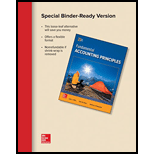
Introduction:
Ratio Analysis
• Ratio analysis is a study of several key metrics of a company based on the data presented in its’ financial statements with an objective to evaluate the financial health of a company.
• It is essential for investors, stakeholders, government bodies etc. to evaluate the key metrics of an entity in order to ensure that the company fulfills the going concern principle and displays financial stability.
The key metrics mentioned above include the following:
•
• Current assets are assets that are convertible to cash within a period of one year or less. Current liabilities are liabilities that need to be discharged within a period of one year or less.
• Acid Test Ratio – Also known as quick ratio, it seeks to measure the liquidity position of the Business.
• It seeks to measure the short term liquidity position of the business by comparing the liquid assets i.e. current assets that are readily convertible to cash / liquid instruments and current liabilities.
• Accounts receivable turnover – A measure of the relation between the turnover and accounts receivable measured in number of times.
• It seeks to measure the relation of the credit sales in proportion to the total turnover and is an indicator of how much of the receivables are blocked due to credit sales.
• Merchandise inventory turnover – A measure of the relation between the turnover and inventory measured in number of times.
• It seeks to measure the relation of the inventory rolled over in proportion to the total turnover and is an indicator of how much of the inventory is fast moving in relation to the total turnover.
•
To Prepare:
Report comparing Morgan and Parker companies highlighting their ability to meet current obligations and use current assets efficiently
Want to see the full answer?
Check out a sample textbook solution
Chapter 17 Solutions
Loose Leaf for Fundamental Accounting Principles
- Please show me how to solve this financial accounting problem using valid calculation techniques.arrow_forwardGiven correct option the general accounting question with correct solutionarrow_forwardAmber Corp. bought $380,000 worth of furniture on July 15, 2014. On November 20, 2014, the company purchased $140,000 of used office equipment. If Amber Corp. Elects Section 179, what is the maximum write-off for these purchases in 2014?arrow_forward

 AccountingAccountingISBN:9781337272094Author:WARREN, Carl S., Reeve, James M., Duchac, Jonathan E.Publisher:Cengage Learning,
AccountingAccountingISBN:9781337272094Author:WARREN, Carl S., Reeve, James M., Duchac, Jonathan E.Publisher:Cengage Learning, Accounting Information SystemsAccountingISBN:9781337619202Author:Hall, James A.Publisher:Cengage Learning,
Accounting Information SystemsAccountingISBN:9781337619202Author:Hall, James A.Publisher:Cengage Learning, Horngren's Cost Accounting: A Managerial Emphasis...AccountingISBN:9780134475585Author:Srikant M. Datar, Madhav V. RajanPublisher:PEARSON
Horngren's Cost Accounting: A Managerial Emphasis...AccountingISBN:9780134475585Author:Srikant M. Datar, Madhav V. RajanPublisher:PEARSON Intermediate AccountingAccountingISBN:9781259722660Author:J. David Spiceland, Mark W. Nelson, Wayne M ThomasPublisher:McGraw-Hill Education
Intermediate AccountingAccountingISBN:9781259722660Author:J. David Spiceland, Mark W. Nelson, Wayne M ThomasPublisher:McGraw-Hill Education Financial and Managerial AccountingAccountingISBN:9781259726705Author:John J Wild, Ken W. Shaw, Barbara Chiappetta Fundamental Accounting PrinciplesPublisher:McGraw-Hill Education
Financial and Managerial AccountingAccountingISBN:9781259726705Author:John J Wild, Ken W. Shaw, Barbara Chiappetta Fundamental Accounting PrinciplesPublisher:McGraw-Hill Education





